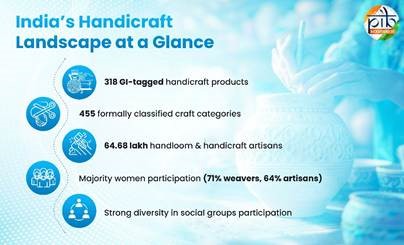





Source: IndianExpress
Disclaimer: Copyright infringement not intended.
Context
Details
Key Elements of the Scheme
Contract Farming

Must Read Articles:
Status of Agriculture in India
Model Agricultural Produce and Livestock Marketing (Promotion and Facilitation) Act, 2017Purpose: Key Features: Unified Market: Establishes a unified national market for agricultural produce and livestock. Private Market Establishment: Allows private individuals or companies to set up and operate their own markets. E-Trading: Promotes e-trading and direct marketing of agricultural produce. Regulation Simplification: Simplifies regulations to encourage competition and reduce market intermediaries. Farmer Empowerment: Empowers farmers by providing more marketing channels to sell their produce. Implementing Agency: Model Agricultural Produce and Livestock Contract Farming and Services (Promotion and Facilitation) Act, 2018Purpose: Key Features: Contract Farming Agreement: Outlines clear guidelines for drafting and registering contract farming agreements. Dispute Resolution: Establishes a structured process for resolving disputes arising from contract farming agreements. Fair Practices: Ensures fair practices and protects the interests of farmers. Price Assurance: Provides mechanisms for price assurance to farmers under contract farming. Support Services: Facilitates provision of inputs and technical advice to farmers by the contracting party. Implementing Agency: Model Agricultural Land Leasing Act, 2016Purpose: Key Features: Legal Framework: Provides a legal framework for leasing agricultural land, ensuring security of tenure for tenants. Flexible Leasing: Encourages flexible leasing arrangements, including short-term and long-term leases. Tenant Rights: Protects the rights of tenants, ensuring they can access institutional credit and government benefits. Dispute Resolution: Establishes a mechanism for resolving disputes between landowners and tenants. Promotion of Investment: Encourages investment in agriculture by providing clarity and security in land leasing. Implementing Agency: |
Implications
Various Agricultural Schemes, Policies, And Acts In India As Of 2024
|
Scheme/Policy/Act |
Description |
Key Features |
|
Pradhan Mantri Fasal Bima Yojana (PMFBY) |
Crop insurance scheme |
Provides financial support to farmers suffering crop loss/damage |
|
Pradhan Mantri Krishi Sinchai Yojana (PMKSY) |
Irrigation scheme |
Aims to expand cultivable area under assured irrigation, improve on-farm water use efficiency |
|
National Food Security Mission (NFSM) |
Food security initiative |
Focuses on increasing production of rice, wheat, pulses, coarse cereals, and commercial crops |
|
Soil Health Card Scheme |
Soil health management |
Provides soil health cards to farmers for better nutrient management |
|
Paramparagat Krishi Vikas Yojana (PKVY) |
Organic farming promotion |
Encourages organic farming through the adoption of organic village clusters |
|
Rashtriya Krishi Vikas Yojana (RKVY) |
Agriculture development |
Aims to incentivize states to increase public investment in agriculture and allied sectors |
|
National Agriculture Market (e-NAM) |
Agricultural market reform |
Creates a unified national market for agricultural commodities |
|
Kisan Credit Card (KCC) |
Credit support |
Provides timely credit support to farmers for their cultivation and other needs |
|
National Mission on Sustainable Agriculture (NMSA) |
Sustainable agriculture |
Promotes sustainable agriculture through climate change adaptation measures |
|
Integrated Scheme for Agricultural Marketing (ISAM) |
Market infrastructure |
Supports state governments in creating and improving market structures |
|
Mission for Integrated Development of Horticulture (MIDH) |
Horticulture development |
Promotes holistic growth of horticulture sector |
|
National Bamboo Mission (NBM) |
Bamboo sector development |
Focuses on the development of the complete value chain of the bamboo sector |
|
Sub-Mission on Agricultural Mechanization (SMAM) |
Mechanization of agriculture |
Promotes agricultural mechanization to improve efficiency |
|
National Mission on Oilseeds and Oil Palm (NMOOP) |
Oilseed production |
Enhances oilseeds and oil palm production |
|
Pradhan Mantri Kisan Samman Nidhi (PM-KISAN) |
Income support to farmers |
Provides income support to farmers through direct transfers |
|
Pradhan Mantri Annadata Aay SanraksHan Abhiyan (PM-AASHA) |
Price support scheme |
Ensures remunerative prices to farmers for their produce |
|
Agricultural Produce Market Committee (APMC) Act |
Agricultural marketing |
Regulates the sale of agricultural produce to ensure fair prices |
|
Essential Commodities Act |
Price control |
Controls production, supply, and distribution of essential commodities |
|
Farmers' Produce Trade and Commerce (Promotion and Facilitation) Act, 2020 |
Agricultural trade |
Allows farmers to sell their produce outside the APMC mandis |
|
Farmers (Empowerment and Protection) Agreement on Price Assurance and Farm Services Act, 2020 |
Contract farming |
Provides a framework for contract farming agreements |
|
Model Agricultural Land Leasing Act, 2016 |
Land leasing |
Encourages the leasing of agricultural land to improve productivity |
Sources:
|
PRACTICE QUESTION Q: Consider the following statements regarding agricultural reforms in India:
Which of the statements given above is/are correct? a) 1 and 2 only Answer: d) |







© 2025 iasgyan. All right reserved